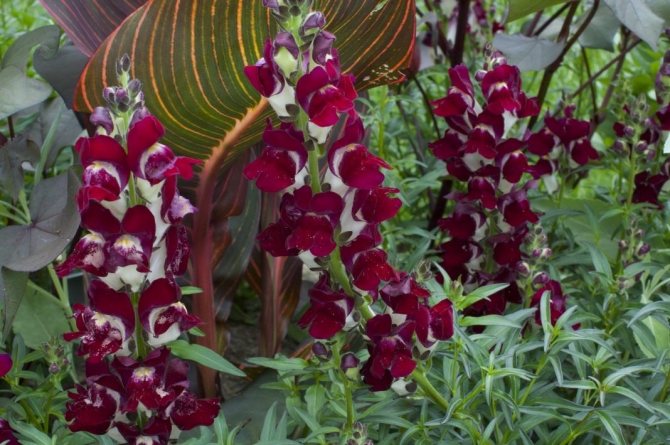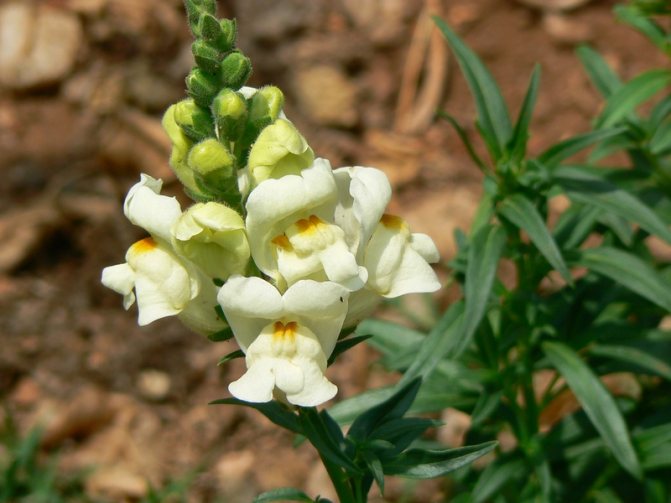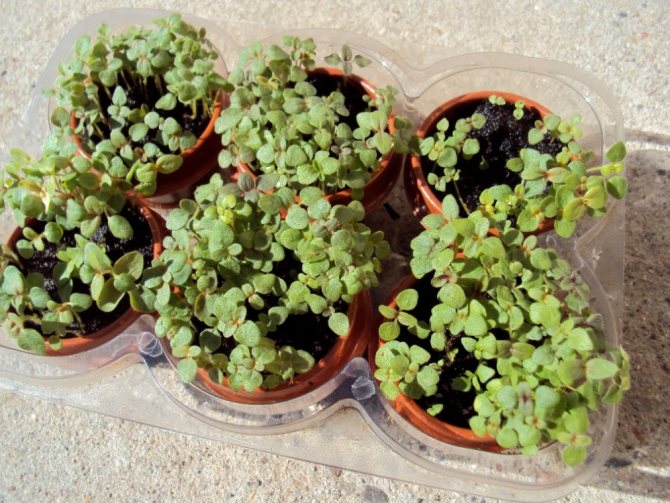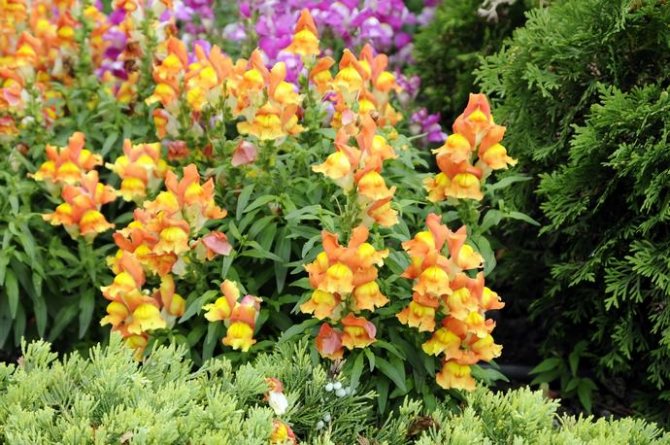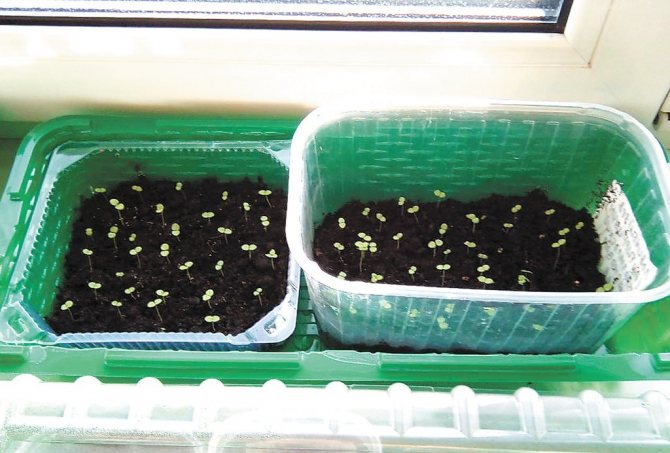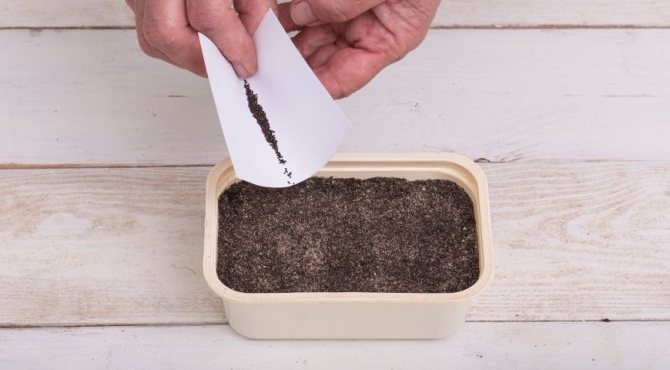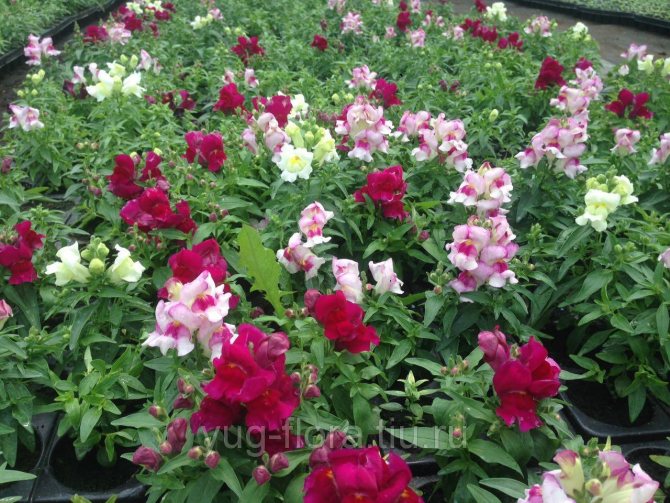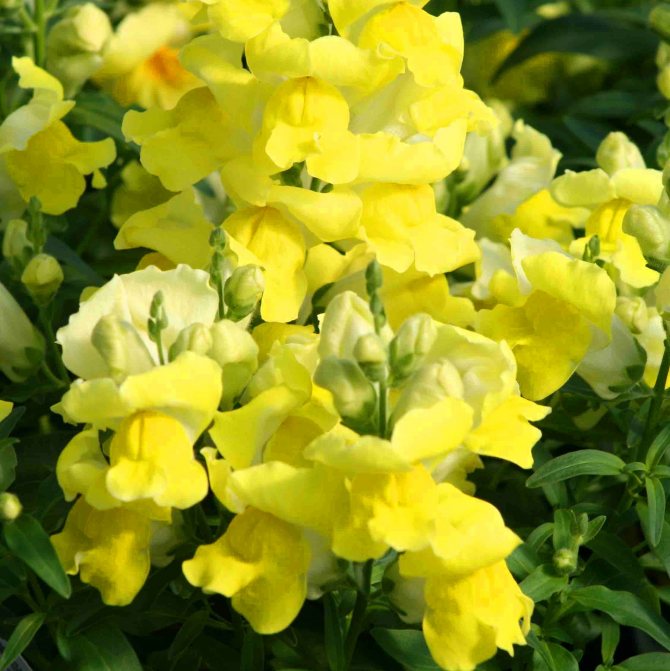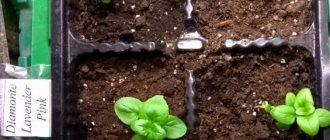Antirrinum or snapdragon is a perennial, annual or semi-shrub herbaceous ornamental flowering plant native to the warm Mediterranean countries. In nature, the flower also grows in North America and Europe. The snapdragon plant is also very popular among gardeners. And this is understandable, because amazing colors of buds, bizarre flower shapes and long flowering can decorate any part of the garden throughout the season.

Pictured is a snapdragon plant
Content
- Listen to the article
- Description
- Growing snapdragon from seed Sowing
- Seedling care
- When to plant
- How to grow
- Gigantic
Caring for antirrinum after planting in open ground
Further care of the flower is reduced to regular irrigation, top dressing, weeding and furrowing of the earth.
Snapdragon is fertilized with minerals like nitroammofoska, nitrophoska, ammofoska.
The culture is demanding on moisture. She recovers quickly after generous watering. If you forget about moisture, then the flower will not open well or even discard the inflorescences. Do not allow the soil to dry out. It is optimal to water in the morning.


It is advisable to water the flower under the root. If this is done superficially, the buds will accumulate water and begin to slope. Some may even fall off.
The plant blooms in waves. Don't worry if there is a delay in flowering. Such waves continue until the first frost. As soon as the flowers have faded, they are recommended to be removed.
Planting and caring for snapdragons
- Landing: in warm climates, sowing seeds in the ground in April or before winter. Seedlings are sown on seedlings in mid-March, seedlings are planted in open ground closer to mid-May or early April.
- Bloom: from mid-summer to late autumn.
- Lighting: bright sunlight or partial shade.
- The soil: well fertilized, breathable, light loamy soils with a pH of 6.0-7.0, cultivated to a depth of 30-40 cm.
- Watering: only in dry mornings, abundant.
- Top dressing: 2-3 times before flowering with full mineral fertilizer.
- Reproduction: seeds and cuttings.
- Pests: aphids, root nematodes, spider mites, scoops, thrips, slugs.
- Diseases: late blight, fusarium, verticillosis, black leg, septoria, sclerotinosis and peronosporosis.
Read more about growing snapdragons below.
Diseases and pests of antirrinum
With the arrival of rains and cold weather, red spots form on the leaves of the plant. If this happens, the culture is treated with Zircon according to the manufacturer's instructions. For preventive purposes, the flower is sprayed with the same drug in a lower dosage. Severely affected plants are removed from the garden completely.
Snapdragon is often attacked by a mosaic, characterized by mottled leaves. Diseased plants are immediately removed and burned.
The defeat of a culture called stem moths is manifested by the presence of caterpillars that penetrate the lower part of the flower pagon, gnawing a longitudinal course in it. As a result, the damaged areas die. They fight the parasite by removing weeds.The mutilated plants are cut and burned. For prophylaxis, 0.2 percent chlorophos is used and the stems are sprayed with it from mid-May.


Black leg disease affects young animals due to waterlogged soil. Snapdragon stems will become thin, darken. Affected flowers die. They fight the disease by reducing and normalizing watering. Sick cultures are destroyed. The soil is treated with potassium permanganate or formalin.
If the flower began to turn yellow and dry, it means that it was attacked by a sore fusarium. In this case, the stem rots. They fight the disease by timely removal of plants and disinfection of the soil with special preparations.
Snapdragon flower - description
The snapdragon plant is a semi-shrub or herbaceous plant with straight, branched, green, finely grooved stems from 15 cm to one meter in height, forming pyramidal bushes. The upper leaves of the snapdragon are alternate, the lower ones are opposite, they are oblong-oval or lanceolate in shape, color from light green to dark green with red veins.
How to sow calendula, how to care for it
- How to grow petunia seedlings in 2019 at home
The flowers are fragrant, rather large, irregular, two-lipped, depending on the variety, simple or double, collected in spike-shaped inflorescences, they are painted in white, yellow, pink, pale fawn, all shades of red, but there are also two-color and even tricolor varieties. The fruit is a two-celled polyspermous capsule, in one gram from 5000 to 8000 seeds. Snapdragon bloom usually begins in June and ends with frost.


Most often, a perennial snapdragon in horticulture is grown as an annual plant, but with good care and favorable conditions, a cold-resistant snapdragon can successfully overwinter in the garden and bloom the next year more beautifully than before. In garden design, antirrinum is grown as a curb plant, although snapdragons look great both in a flower bed and planted in groups against the backdrop of a green lawn. Snapdragons are often used to decorate balconies and terraces.
Of particular interest among flower growers today are ampelous forms of snapdragons, which can be grown in suspended structures to decorate terraces and galleries.


In the photo: Snapdragon blooming in the garden
Description of culture
Snapdragon (Latin Antirrhinum) belongs to the Plantain family and is a perennial herb with large green stems and flowers of various colors. In the climate of the middle zone, it is cultivated as an annual, because it is not able to overwinter.
Snapdragons form many stems, they are straight, sometimes branching. Their height depends on the variety. Leaves are lanceolate or oval, slightly pubescent, colored green.
Note! The most interesting are the snapdragon flowers, which look like the open mouth of a lion. They are large and bright, have an irregular shape, two-lipped. Outside, the flower is pubescent. Terry varieties have also been bred. The inflorescences of the plant are racemose. The color of the flowers is very diverse: white, blue, pink, yellow, purple. There are even two-color ones.
Snapdragon is native to the Mediterranean, where it is found in the wild. Not so long ago it appeared in Russia and immediately gained popularity. It grows now also in Asia and North America, you can find it in Western Siberia. It is an adornment of any site, with its aroma attracts bees, bumblebees and various butterflies. In nature, it is a wildflower.


Snapdragon
Growing snapdragon from seed
Sowing snapdragon
Snapdragon reproduces in generative and vegetative ways. Snapdragon seeds retain the ability to germinate for several years.If you live in a warm climate, you can grow snapdragons from seeds, sowing them directly into the ground, and they will sprout in two and a half or three weeks, without any problems surviving even a slight night cold snap, which is common in spring, but in areas where it is warm comes gradually, it is better to use the seedling method of growing snapdragons. How to grow snapdragons from seeds using seedlings? This process is neither complex nor labor-intensive.


So, sowing snapdragon: early March pour coarse sand into bowls with a diameter of at least 10 cm with drainage holes, and on top of the sand - compost soil mixed with sand, compact it, level it, sprinkle with water from a sprayer and distribute seeds mixed with sand on its surface, which we then cover from above with a thin layer of the same substrate, moisten it from a finely dispersed spray bottle and cover the sowing dish with glass.
Conditions for growing healthy asters
- Grouse: care, planting, cultivation and varieties
We remove condensate from the glass every day, let the crops breathe and, as necessary, moisten the soil from the sprayer. At a temperature of 23 ºC and a moderate humidity of the substrate, sprouts will appear in a couple of weeks. As soon as this happens, move the bowl to a bright, non-sunny place so that they do not stretch out, and as soon as the emergence of seedlings becomes massive (after 3-4 days), remove the glass.


In the photo: Growing snapdragon from seeds
Snapdragon seedlings
The seedlings will grow slowly at first, and your task during this period is to monitor the correct moisture of the soil, watering the soil in the morning so that there is plenty of moisture, but not in excess, as this can lead to the disease of the seedlings with a black leg. "Fallen" sprouts should be removed with tweezers, and the place where they grew should be powdered with crushed coal or sprinkled with a small amount of calcined and cooled river sand. After the appearance of a pair of real - not cotyledonous - leaves, the seedlings dive into a container or box, positioning them so that they grow freely.
You can plant seedlings in personal pots, or, for example, dive three shoots into larger pots.
Place the cut seedlings in a bright place, protecting them from direct sunlight, and gradually begin to accustom them to the environment and temperature in which they will find themselves after transplanting into open ground: open the window for a while during the day, but make sure that the seedlings do not ended up in a draft. After the development of 4-5 leaves, the central shoot of each seedling must be pinched to enhance tillering, but if the lateral shoots are also growing too actively, pinch them too.


In the photo: Red snapdragon
How to dive seedlings
After the second pair of true leaves appears in the seedlings, they begin to dive. You can dive the plant into a large container, so that the seedlings feel free or in separate cups.
You can dive several sprouts into one cup. Place the seedlings in a bright place. Three days after diving, accustom the seedlings to the temperature and conditions that await them after transplanting into open ground. To grow a beautiful strong bush, the central shoot of the seedling must be pinched. It happens that the lateral shoots are actively growing, they also need to be pinched.
Snapdragon planting
When to plant snapdragons
In late May - early June, grown, matured and hardened seedlings are planted in open ground. And do not be afraid of the last night cold snaps: your young "lion cubs" will calmly survive them. A snapdragon growing area can be sunny or slightly shaded, but always well-drained and protected from strong winds. The soil, however, requires light and nutritious.The best soil for snapdragons is a mixture of sand, compost and peat in approximately equal proportions. The optimum pH of soil for snapdragon is pH 6-8.


In the photo: Snapdragon in a flower bed
How to plant snapdragons
Planting snapdragon flowers is carried out according to the following scheme: tall varieties are planted at a distance of 40-50 cm from each other, medium-sized ones - at a distance of 30 cm, undersized ones - after 20 cm, dwarf ones - after 15 cm.As soon as the snapdragon takes root, it starts very grow quickly and develop into a lush flowering bush. You should know that snapdragon planting is carried out in well-moistened soil.


Rules for combining snapdragons with other plants in a flower bed
When perennials are just starting to grow in flower beds, these annuals perfectly fill empty spaces, complementing the overall look with their abundant flowering.
Since there are a large number of antirrinum varieties of different heights and colors, you can always choose the necessary varieties for a particular flower garden, border, or simply fill an empty space on the lawn.
Snapdragon is one of the many garden flowers that are widely used in landscape design when decorating park areas, planted along paths and curbs, when decorating ribbon flower beds and round flower beds. These flowers are also popular with summer residents in the garden, as they go well with most other garden flowers.
Snapdragon care
How to grow snapdragons
This plant is unpretentious and needs only what any garden flower needs: watering, loosening the soil, removing weeds and feeding. You will have to water the plants only in dry times, when there is no rain, but not at night. The next day after watering or on the same day in the evening, it is advisable to loosen the soil and weed out the weeds. It is advisable to tie tall varieties of snapdragon to a support. It is better to pick off wilted flowers so that the plant does not expend energy on them.
- Stratification at home
If you want to get a long flowering from the snapdragon, do not let it set seeds, remove the flower arrow as soon as the last flowers have wilted. You need to cut the peduncle under the lowest flower, then new arrows and new flowers will appear.
As soon as the plant after planting takes root in the soil, it needs to be fed with nitrophos and organic matter, the second feeding is carried out when the snapdragon begins to form buds, and in this case, a urea solution, potassium sulfate and superphosphate are used at the rate of one tablespoon of each ingredient per 10 liters water.


In the photo: Pink flowers of antirrinum
Snapdragon pests and diseases
Sometimes red spots of rust appear on the plant, septoria, snapdragon, black leg, gray or root rot can affect the plant. Sick specimens must be immediately removed and burned, and the soil in the place where they grew must be treated with an antifungal agent (fungicide).
How to grow sweet peas from seeds - a proven method
Of insect pests, scabbards, fly larvae, caterpillars and butterflies that lay eggs are dangerous. It is always easier to take preventive measures than to treat an already existing disease or expel insects that have settled in flowers, so follow the recommendations for plant care, remove diseased or pest-affected specimens in time, do not allow plants to grow too close to each other, observe moderation in moisturizing the area, watering flowers at the root, and not over the leaves, and the snapdragon will not be afraid of diseases or insects.


In the photo: Cultivation of snapdragon
Snapdragon after flowering
Snapdragon can bloom until the fall frost, but when a stable fall comes, cut the snapdragon, if you are growing it as a perennial plant, so short that the remainder of the stem is 5-8 cm high above the ground, and cover the area with peat with sawdust or dry foliage - mulch will help plants survive the winter. If you are growing a one-year snapdragon, then to avoid self-seeding during the entire flowering period, cut off the wilted flowers in time, and when all the flowers on the arrow have faded, cut the peduncle as low as possible. This must be done in order to prevent the seeds from ripening and waking up to the ground.When autumn comes, dig up the area and burn the remains of the plants to destroy the pests that have settled in them.


In the photo: Snapdragon flower
Preserving blooming antirrinums for the winter
Snapdragons that continue to bloom do not have to be thrown away or doomed to death with the arrival of frost. In the fall, before the onset of negative temperatures, they can simply be transferred to pots, trying to minimize trauma to the roots and transfer them to room conditions. There, snapdragons will remain attractive for a long time and delight you with their flowering.
In open soil, only antirrinums can winter, which are grown in regions with a mild climate (hardened plants can withstand frosts up to -5)
How and When to Collect Snapdragon Seeds
The seeds of most garden plants are harvested when they are fully ripe. But snapdragon seeds need to be harvested in the phase of incomplete maturity, so that they can then ripen in a dry room with good ventilation. The collection is carried out in a long paper bag, as for a baguette. They begin to collect seeds when the fruits on the lower part of the peduncle ripen: the upper part of the peduncle, on which the fruits are still green, is cut and discarded, and a paper bag is put on the rest of the flower arrow, tied with a thread below the fruits and cut off the shoot below the dressing. The inverted bag is suspended in a warm, dry room and waited for the ripe seeds to pour out of the capsules into the bag. Then they are placed in cardboard boxes and stored at a temperature of + 3-5 ºC, protected from possible moisture ingress.


In the photo: Antirrinum flower
Snapdragon Pest and Disease Control
One of the biggest drawbacks of snapdragons is rightfully considered extreme susceptibility to pests and diseases. Even in ideal conditions, he can present an unexpected unpleasant surprise. Caterpillars, butterflies, fly larvae and black leg, almost all fungal diseases of ornamental plants, from late blight to rust, pose the greatest danger to antirrinum.
It is almost impossible to deal with problems, it is better to destroy the plants immediately. But it is much easier to prevent problems: a non-thickened planting, normal care and the right choice of soil that does not allow moisture to stagnate, guarantee success.


Snapdragon. <>
Types and varieties of snapdragons
Today in professional floriculture there are several classifications of snapdragons, and the most common of them is by plant height. On this basis, varieties are divided into five groups:
Gigantic
Height from 90 to 130 cm. The central shoot in plants of this group is much higher than the shoots of the second order, there are no shoots of the third order. Sorts: Arthur - cherry color, 90-95 cm high, F1 red XL and F1 pink XL 110 cm high, respectively, in red and pink shades.
High
From 60 to 90 cm, grown for cut or as a vertical accent in mixborders or groups. Lateral shoots are much lower than the central one. Snapdragon tall in the cut lasts up to a week or longer, the most fragrant varieties are yellow shades. Popular varieties: Anna German - a soft pink snapdragon, Canary - a bright yellow variety, a mixture of Madame Butterfly varieties - a terry snapdragon of different shades, and others.


In the photo: Yellow snapdragon
Tall or medium-sized
Representatives of the variety reach 40-60 cm in height, universal varieties, grown both as flower bed decoration and for cutting. They are distinguished by strong branching. A characteristic feature of the varieties of this group is also that the central shoot is slightly higher than the lateral shoots. Varieties: Golden Monarch - yellow, Ruby - bright pink, Lipstick Silver - pinkish-white.
Low
25 to 40 cm tall, grown as bedding or border flowers.These varieties have many flowering shoots of the second and third order, while the main shoot is at the same level or slightly below the shoots of the first order. Varieties: Hobbit, Tip-top, Lampion ampelous hybrid.


In the photo: White snapdragon
Which variety should you choose?
There is a wide range of snapdragons on the market. And it is sometimes difficult for beginners to make a choice. To purchase a suitable variety, you should understand what types of plants exist. You should also pay attention to the most popular options.
Among gardeners, the following varieties are in demand:
- Rainbow. It is a snapdragon Rainbow annual, reaching a height of 40 centimeters. Abundant flowering shrub, covered with large and fragrant buds. Its shape is pyramidal, branched. The variety is highly valued by summer residents for its early and long flowering. Usually, the Rainbow is chosen for planting on curbs, flower beds. Ideal for cutting. Usually grown through seedlings.
- California. The California snapdragon is characterized by a height of about 80 centimeters. The shape of the bush is spherical. The inflorescences are rich and bright in color. Shades are very different. The flowering part is quite high, almost half the height of the crop. California is suitable for decorating flower beds, flower beds and for creating bouquet arrangements.
- Amulet. The plant snapdragon ampelous amulet belongs to the dwarf. Its height is only 20 centimeters. This is a fairly rare breeding form. Designed for containers and hanging planters. The shoots are developed, hanging, covered with a large number of inflorescences. The foliage is lanceolate. The color of the buds is pink, yellow, white and red. The variety is photophilous, cold-resistant and unpretentious to the composition of the soil.
- Twinny. The height of the shrub varies between 20-25 centimeters. The inflorescences are beautiful, terry, abundantly cover the culture and delight the eye right up to the first frost. Choosing the Twinny Snapdragon: Growing from seed is usually successful even with newcomers to the floriculture industry. After all, the variety is not capricious, resistant to bad weather.
Thus, snapdragon is a popular decorative flower. It is chosen by many novice gardeners for its ease of growing and unpretentious care. There are many types and varieties of this culture. The most popular varieties today are the Twinny, California, Amulet and Rainbow varieties. Read the article: Garden delphinium - growing seedlings from seeds for beginners.
Use in landscape design
Snapdragon will become a real decoration of the garden plot:
- Flowers are planted along paths and curbs.
- Flowers look good in combination with other types of plants (for example, with poppy, sage, phlox).
- Looks beautiful in hanging flowerpots that will decorate a veranda, loggia or balcony.
- Dwarf flower varieties look good on alpine slides.
The beautiful and bright bloom of the snapdragon is sure to attract the attention of others. The variety of species allows you to choose a suitable variety for single cultivation and in combination with other plants.
Flowers of a dog photo: names and myths
As has long been customary, there are many names for a plant that grows in one place or another. In Russia they often call "dogs", and in Ukraine "mouths", in romantic France for some reason the name "wolf's mouth" has taken root, and in Great Britain "biting dragon or snapdragon". Translated from Greek, where, as it were, the snapdragon comes from, "antirrinum" literally means "similar to the nose" or "similar to the nose."
In ancient Greek mythology, there is a story about the first of the twelve feats of the hero of myths Hercules, in which he was able to gain the upper hand over the fierce and invincible Nemean lion. For this feat from the goddess Flora, Hercules was honored to receive a flower created especially for him. She called it "snapdragon". From that moment on, there is a tradition according to which this unusual flower is presented to all winners.
This plant is about 500 years old, but a German scientist first began to develop new varieties only in the 19th century. Today, there are about 1000 varieties of this plant. They were all bred thanks to a single species called Antirrhinum majus.
Reproduction and planting
Flower propagation can be done in several ways.
Seeds
If you decide to propagate the snapdragon with seeds, then you need to do this in late April or early May on a film cover, which must be removed every day to remove condensation.
After planting the snapdragon, as in the case of delphinium seeds, future plants are sprinkled with earth and watered abundantly. After the emergence of seedlings, the shelter must be removed. Excess seedlings should be removed. Watering should be done in the morning.
Young seedlings should not be poured. Excess moisture can be detrimental to them.
Cuttings


For reproduction of snapdragon, you can use cuttings of the plant you like. In summer, cut the sturdy, lateral stems. Place them in boxes with loose, fertile soil and cover with foil.
Rooting occurs in a month and a half. As soon as new shoots begin to appear, plants should be transplanted into separate pots. In the spring, you just need to plant the finished planting material in the prepared soil. This procedure is also quite applicable when planting tulips, and read about when to plant them here.
Seedling
The lion lion tolerates transplants well. Therefore, the breeding method with preliminary cultivation of seedlings is quite suitable for him. Seedlings are sown in boxes in April and placed closer to the window. To accelerate the emergence of seedlings and their further growth, you can cover them with a polyethylene film.
For growing seedlings, you should take a mixture of soil with sand or a soil specially designed for this. Watering should be done regularly. If all planting rules are observed, in a week you can expect the appearance of friendly shoots.
When the plants reach ten centimeters in height, they should be pinched. After that, like the Strickt juniper, the planting and care of which we described in the article, the lateral shoots will begin to grow rapidly. This breeding method allows you to increase the flowering time of the snapdragon.
Application in the garden
This is an excellent border crop, if you need to create a border for a mixborder, a rabatka, a line along the path - you cannot find a brighter plant. Can be good in group plantings, goes well with lawns. He is planted in balcony boxes, containers, pots. They decorate loggias and terraces with it.
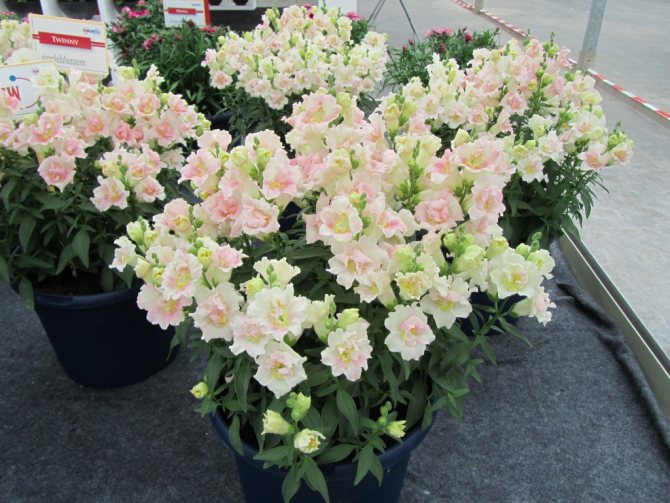

Twinny Appleblossom snaps


Snapdragon can be good not only solo, but also in complex composite bouquets, for example, in the second bouquet it is combined with peonies, ranunculus, roses, lisianthus, hydrangeas.


How antirrinum seeds are harvested
All seeds are enclosed in fruit, which is a multi-seeded capsule. It is necessary to collect the seeds before they are fully ripe. Fully ripe seeds are black. They must be stored in a paper envelope. This will allow sufficient air to enter the seedlings. Dry the seeds and refrigerate until spring comes. Seedlings that are grown from seeds may differ from their parents.
The flowering of the plant lasts until frost. You must decide for yourself whether you have a perennial or annual snapdragon.
If you want to grow it as a perennial, then cut off the shoot, leaving a shoot no more than 8 cm above the ground. Do not forget to cover it with ordinary peat, dry fallen leaves or sawdust. In the event that antirrinum is grown as an annual plant, then it is necessary to promptly remove wilted inflorescences that can sow seeds. After all the flowers on the shoot have faded, cut it as low as possible to the soil.Such a procedure will surely prevent the seeds from waking up to the ground. With the onset of late autumn, the soil where the snapdragon grew must be dug up, and the dried plant itself must be burned in order to avoid a new encounter with pests that could settle in it.
Preparing for landing
Planting material: selection and preparation
When choosing a planting material, it is necessary to pay attention to its quality characteristics. Seeds retain their high germination capacity only for two to three years, so you should not purchase packages with an expired shelf life. It is better to make such purchases in specialized stores from trusted and reliable manufacturers. Since snapdragon seeds are very small and light, one gram contains a large number of them (about 1000 pieces). This must be taken into account when purchasing. Indeed, on 1 square meter of land, you can plant seedlings in an amount of 50 to 70 copies. You can buy ready-made seedlings. Young plants should have a strong stem, a well-developed root and leaves with a rich green tint.
Before purchasing seeds or seedlings, you need to decide on the purpose and place of planting flowering crops and choose plants of the desired color and height. The most popular varieties:
- more than 70 cm high - "Ruby", "Alaska", "Canary" and "Anna German";
- heights from 40 to 60 cm - "Ruby", "Bisari", "Madame Butterfly", "Golden Monarch" and "White Monarch";
- height from 15 to 40 cm - "Finger", "Chimes", "Magic Carpet", "Twinny" and "Flower Shower".
Before sowing, it is recommended to soak the seeds in a disinfecting weak manganese solution and leave for 20-30 minutes. After the preventive procedure, the seed material must be rinsed under running water and left to dry on a paper towel.
Seeds dried to a loose state should be mixed in equal parts with fine dry sand and sowing can be started.
Place of cultivation
When planting seeds for seedlings, you will need plastic or wooden containers, you can use wide flower pots with a diameter of 10 cm. The seedlings are grown in a bright room, but without direct sunlight on the tender young seedlings.


But flower beds should be located in an open, well-lit, sunny place. Penumbra areas will negatively affect the timing and abundance of flowering. Under sunlight, the color of flowers will be more delicate and saturated. It is very important that the plants are not exposed to strong gusts of wind.
The soil
Snapdragon requires fertile, nutritious and light soil, which will consist of garden or vegetable garden soil, mixed in equal amounts with fine-grained sand, rotted compost and peat. In the presence of clayey soil with high humidity, it is recommended to add peat and a large amount of organic matter. Additional components are added to sandy loam garden areas that will help retain moisture - leafy soil, black soil, organic matter.
Neighborhood with other cultures
The most comfortable neighbors of snapdragons in a flower bed or flower beds are dahlias, zinnias, sage, calendula and sea lobularia. Most flowering annuals can make an excellent company.
Breeding methods
Antirrinum is usually propagated using seedlings. Tall varieties will bloom later than their undersized counterparts. This must be taken into account when sowing.
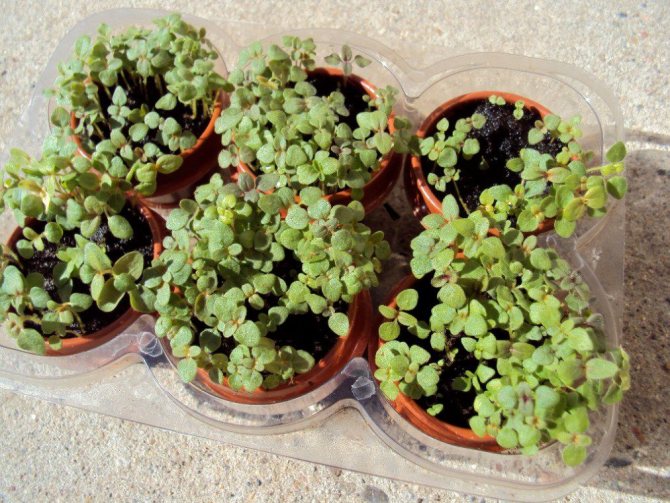

Snapdragon seedlings
On a note! Plant seeds can also be sown directly into open ground. This only applies to small varieties of snapdragons. The right time for sowing is the first decade of May. Flowering should be expected later than seedlings.
If you do not destroy the faded antirrinums, then it is likely that, having survived the winter, their seeds will germinate in the thawed soil.Such plants produce strong, luxuriantly flowering bushes.


Vivid variety of snapdragons
Care during and after flowering
To preserve the high decorativeness of the snapdragon:
- moisten the soil in time;
- periodically fed with phosphorus-potassium compounds;
- remove weeds;
- loosen the earth;
- add mulch (peat or sawdust) to maintain soil moisture;
- do not allow long-term presence of wilted petals on the inflorescence.


Wintering plants
Despite the fact that snapdragons are characterized as a perennial plant, cultivated varieties do not always tolerate frost well. If the winter is windy, with little snow and very cold, then some species freeze out.
To preserve plants for next year, you will have to work hard:
- at the end of autumn, while there is no frost, the bush is carefully cut off so that a stem peeking out of the ground no more than 10 cm long;
- it is important to build a good shelter: first, they spud antirrinum, then spruce branches, a layer of fallen leaves, humus or peat are placed on a hill of earth (cover thickness - up to 10 cm);
- with a careful approach, proper arrangement of the protective layer, the soil does not freeze, young antirrinums appear in the spring. You can leave overwintered bushes in the same place or plant a decorative view in other areas.
Care rules
Watering
With regular precipitation, watering the snapdragon is not required. On hot and dry summer days, watered in the early morning hours.
Irrigation water should not fall on the leaves of the plants. For this perennial, excess moisture is more dangerous than its lack. Excess water will lead to root rot. It is recommended to moisten the soil near the flowers only when its top layer dries up by about 2-3 cm. Deep taproots are able to find moisture on their own at great depths, and the plant can do without watering for a long period.
Fertilization
The first top dressing is recommended 15 days after planting seedlings in open ground. Organic matter and nitrophoska contribute to the adaptation of young plants to a new place.


The second feeding of superphosphate, urea and potassium (about 30 g each), diluted in a bucket of water, is required at the stage of bud formation.
The soil
You can carry out mulching immediately after planting seedlings, which will not only save you from weeding the beds, loosening and weed control, but also save precious moisture for a long time. A good snapdragon mulch is humus, grass cuttings and rotted sawdust.
Preparing for the winter period
When the first autumn frosts appear, the stems of flowering crops are cut almost completely, leaving only 3-5 cm above ground level. After that, the flower beds are covered with a thick mulch layer, which will preserve the root part of the plants until spring. Peat, fallen leaves, grass cuttings and sawdust are ideal as mulch and winter shelter.
Drawing up flower arrangements and combining with other plants
Snapdragon is used to create flower arrangements. The culture is cut by ¾ during the flower opening period, then the antirrinum is guaranteed to delight with its beauty for up to two weeks. Its great advantage is its unobtrusive aroma that does not cause irritation.
Dwarf varieties grown in pots will create the visual effect of a lush bouquet. This is complemented by the variety of colors of the plant.
On the flowerbed, landscape designers carefully think over and work out the planting of various flower arrangements. Snapdragon can be combined with asters, lavater. Low-growing varieties are complemented by phlox, marigolds, forget-me-nots. Compilation can take place on several grounds. One of them is the color combination of the composition.
Sowing seeds for seedlings step by step
Table. Instructions for growing a snapdragon seedling method.
| Steps, photo | Description of actions |
| For seedlings of antirrinum, a universal soil mixture is suitable, which can be purchased at a specialized store. So that the small seeds of the plant can hatch, the soil is sifted and washed sand is added to it. The mixture can also be prepared from earth, peat and sand, mixing them in a 1: 2: 0.5 ratio. To protect seedlings from diseases and weeds, it is recommended to steam the soil mixture with a double boiler. Steam for 1 hour will protect the plant from the blackleg. In order to make the soil slightly alkaline, after steaming, add to it half a tablespoon of dolomite flour or 1 tablespoon of ash per 0.5 kg of soil. The soil mixture needs to be slightly moistened. |
| Fill the container with a mixture of soil, level the surface and tamp quite a bit. Place the seeds on the fold of a piece of paper and spread carefully over the entire surface. Pour the earth on top with a layer of no more than 1 cm. |
| Spray the topsoil with water from a spray bottle. However, some seeds may float to the surface. This is not scary, since more light is needed for their germination. |
| Cover the container with a transparent lid or plastic bag. Then install it in a lighted place. For the emergence of seedlings, it is necessary to maintain the temperature in the room + 21-24 ° C. The soil must be periodically irrigated with water, otherwise the seeds will dry out and not germinate. |
| After about a week, sprouts will begin to hatch. After emergence, it is recommended to maintain a temperature of + 16 + 29 ° C. Seedlings grow at a slow rate at first. It is especially important to avoid excess water during this time. Watering should be done so that moisture does not get on the leaves. Frequent ventilation is required. The container lid must be removed after 7 days. Immediately after this, the plants must be protected from direct sunlight. |
| With an excessive density of seedlings, they are thinned out using tweezers. |
| The pick is made after the first two true leaves grow. Snapdragon is not afraid of this procedure. In a new place, he will feel good almost immediately. The same soil mixture is suitable, but without preliminary sieving and steaming. Fill the cups or pots with soil, lightly tamp the soil. Then you need to make holes so that there is enough space for the roots. Deepen the sprout by 3 mm and cover with soil. Lightly tamp the earth, otherwise the sprout may tilt when moistened. |
| After picking, the seedlings must be carefully watered. In this case, it is advisable to hold the sprouts until the moisture is completely absorbed. |
| It is recommended to apply liquid fertilizer to the soil every 14 days. The grown seedlings can be pinched between the fourth and fifth pairs of leaves to improve growth and further lush flowering. |
| In the second decade of May, you can plan to transfer seedlings to open ground. Snapdragon needs a well-lit area. In shady areas, antirrinum will not bloom so abundantly. If the seedlings were hardened, then even small frosts are not afraid of it. The soil for good plant growth must be loose. A fertile slightly alkaline soil is suitable (otherwise the roots will not be sufficiently developed). Heavy soil must be diluted with sand, dolomite flour or ash. Before planting seedlings, mineral fertilizing should be applied to the soil, including phosphorus, potassium and nitrogen. |
| Planting holes must be dug at a distance of up to 45 cm from each other, depending on the height of the future plant. The specified distance between plants must be observed if a tall variety is planted. For medium antirrinums, this interval is 30 cm. And plants of small varieties of snapdragons will get along well at a distance of 20 cm between them. |
| Planting must be completed with generous watering, after which it is required to cover the soil with a layer of peat. |


Snapdragon in composition with other flowers


Composition using snapdragon flowers
Video - How best to sow snapdragon
Autumn care and collection of seeds
Planting material for reproduction of antirrinum ripens unevenly: first, boxes with seeds are formed on the lower buds. When the capsules dry up and turn brown, you need to collect most of the material, carefully open the seedlings, and take out small elements. The dried seed is stored for up to four years with the retention of germination.
Snapdragon reproduces well by self-seeding. To maintain the properties of a certain variety, no other varieties should grow within a radius of about 90-100 m. Cross-pollination often changes the color of the petals of new plants that appear in the same area the next year.
Popular varieties
There are a wide variety of varieties of snapdragons. When choosing, the type of growth and branching features are taken into account.
Rocket
A tall, vigorous variety goes well with other plants, tolerates heat. The stem reaches a height of 92 cm, the width of the flower grows to 42 cm.


Lemon
The height of the bush does not exceed 31 cm. Large flowers are distinguished by the presence of three lemon-yellow petals.
Orchid
The stem of the flower stretches up to 23 cm, the width of the bush is no more than 17 cm. Flowering begins early. Lavender flowers.
Golden
Grown for cutting. The inflorescences are high (up to 1 meter in height), in the form of an ear. Flowers are bright yellow in color.
Bronze
The height of the central stem reaches 88 cm. The inflorescences are large, two-colored, yellow-pink.
Madam butterfly
Terry, large flowers are collected in a brush and differ in all kinds of shades. A bush is formed up to 68 cm high and 37 cm wide.


Tip top irma
The shoots reach a height of 82 cm. A distinctive feature is the color of the flower - pink petals are framed with a yellow border. Flowers are suitable for cutting and for decorating the site.
Alaska
The plant forms a bush no more than 62 cm high. Branching is weak. The flowers are snow-white.
Volcano
A narrow bush up to 72 cm high is formed. Inflorescences of yellow-beige color are distinguished by a rich honey aroma. The variety resists frost well.
Brilliantrosa
The bush forms inflorescences in the form of a pyramid. The stem extends to 77 cm. Large bright pink flowers.
Velvet giant
The flower bush reaches 82 cm in height, 33 cm in diameter. Large flowers have an interesting red-purple color.
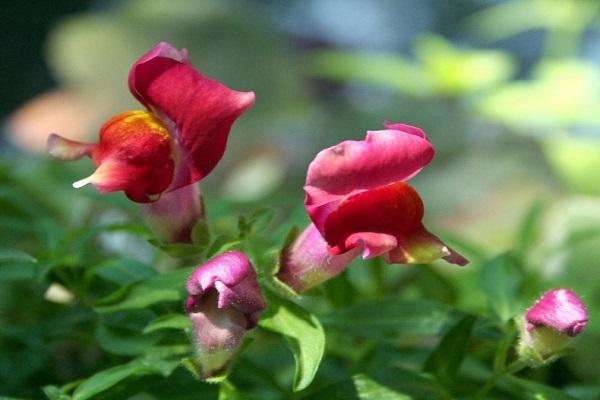

Cherry Improved
The variety is distinguished by a lush, dense flowering. Refers to tall species. The flowers are cherry pink.
The rose
A tall variety of snapdragon forms bushes that look like roses. Large flowers are colored pink.
Black prince
The undersized form of antirrinum. The flowers are large, maroon in color, collected in a brush. Dark greens, black shoots.
Coronette
An early flowering, medium-sized snapdragon species. The shrub does not grow higher than 58 cm. The color of the flowers can be white, pink, dark red.
See also
Planting and caring for lychnis flower in the open field, description of speciesRead
Wildrose
The height of a strong stem is up to 42 cm. The bush is compact. The flowers are beautiful, light pink.
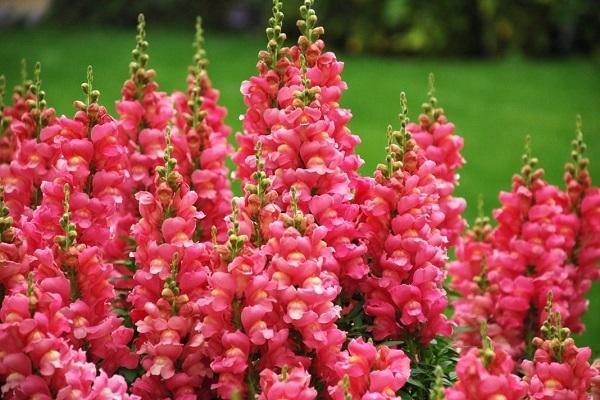

Golden monarch
Medium-sized snapdragon with bright lemon-yellow flowers. The height of the bush is 48 cm. During flowering, a lush cluster of inflorescences is formed.
Defiance
The tall variety is grown for cutting. The flowers are bright, large, velvety, bright red.
Libesglut
A strong stem stretches up to 58 cm. The bush has a semi-spreading crown. The flowers are medium-sized, cherry red.
Red Chiеf
The variety has an average flowering time, a stunted type of growth. Bushes are compact, up to 53 cm high. The flowers are velvety, dark red with a yellow core.
Crimson velvet
The height of the shoot is up to 46 cm. The flowers are velvety, large, deep red, collected in voluminous inflorescences.


Scheeflocke
The variety belongs to the dwarf group. The bush is spherical in shape, does not exceed 22 cm in height. The flowers are snow-white in color with openwork edges.
Crown
The plant forms a bush no higher than 32 cm. It has a long flowering period.
Tom-Tumb
The plant is undersized, spherical in shape. Flowers are small in size, of various shades.
Floral
Flowers of this variety belong to the dwarf group. The bush is compact. Flowers can be of various shades.
The hobbit
The snapdragon variety belongs to the dwarf group. The stem only grows up to 16 cm.Flowers can be of various colors.


Snappy
A low-growing group of plants with an early flowering period that lasts for a long time. The color palette is varied.
Twinny
The undersized flower is distinguished by double or semi-double purple inflorescences.
Photo gallery
How to grow seeds in pots
If you want to decorate your personal plot, then you should use the following methods for breeding snapdragons:
Snapdragon seed growing: when to plant
This method is difficult, since in order for the seedlings to sprout for sure, they need careful care. If the seeds do not have enough heat, then the seedlings will not be able to sprout, which means that you will not be able to get a beautiful flower garden with blooming antirrinum.
Sowing seeds is carried out in March and for this you will need:
- Seeds of the selected variety.
- A small spatula and a regular sieve.
- A mixture of soil.
- A special pot in which the seedlings will be sown.
It is necessary to fill up the earth in the selected container. The soil should not be heavy, you can buy it at any store. Place the seeds densely and press down lightly with your finger. Be sure to cover with a thin layer of soil substrate, using a sieve for this purpose. After planting, the seedlings must be moistened and covered with foil.
In order for the seedlings to germinate for sure, they need a temperature of at least 20-23 degrees. As soon as the first bores appear, be sure to quench. Open the film on the containers each time, increasing the hardening time. Over time, the film should be completely removed.
When and how to sow dogs video review:
Growing with seedlings.
The most common way. Seedlings are grown indoors, and as soon as the seedlings appear, they must be transplanted into open ground or a container.
When to plant antirrinum seedlings in the ground
Doggy flowers
After the seedlings have been hardened and well strengthened, they must be planted in open ground. This procedure is carried out at the end of May days or at the beginning of June days. Do not worry about the mild cold weather that is still present at night, because your hardened plants will easily cope with them.
The plant prefers to grow in sunny or slightly shaded areas, where there are no strong winds that can break delicate, although quite flexible branches.
The only essential condition for successful flower cultivation is a thorough drainage of the soil.
Light, nutrient-dense soil is suitable for planting.
To make the snapdragon feel great, he needs land, consisting of:
- vegetable compost
- river sand
- peat
They are all used in equal amounts.
Soil selection
This flower is a light-loving plant. But he doesn't like strong winds. Therefore, it should be planted in well-lit and protected areas with fertile neutral soil.
Lack of color provokes a delay in the development of plants, and even the absence of peduncles.
To prepare the soil for planting, as in planting and caring for a tree peony, you need to distribute a mixture of three kilograms of humus, two hundred grams of ash and one tablespoon of nitrophoska for each square meter. Next, you should dig up the ground well. It is better to land in the absence of the sun at a distance of thirty centimeters from each other.



